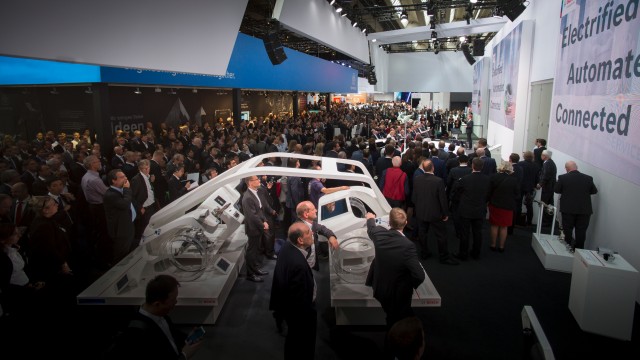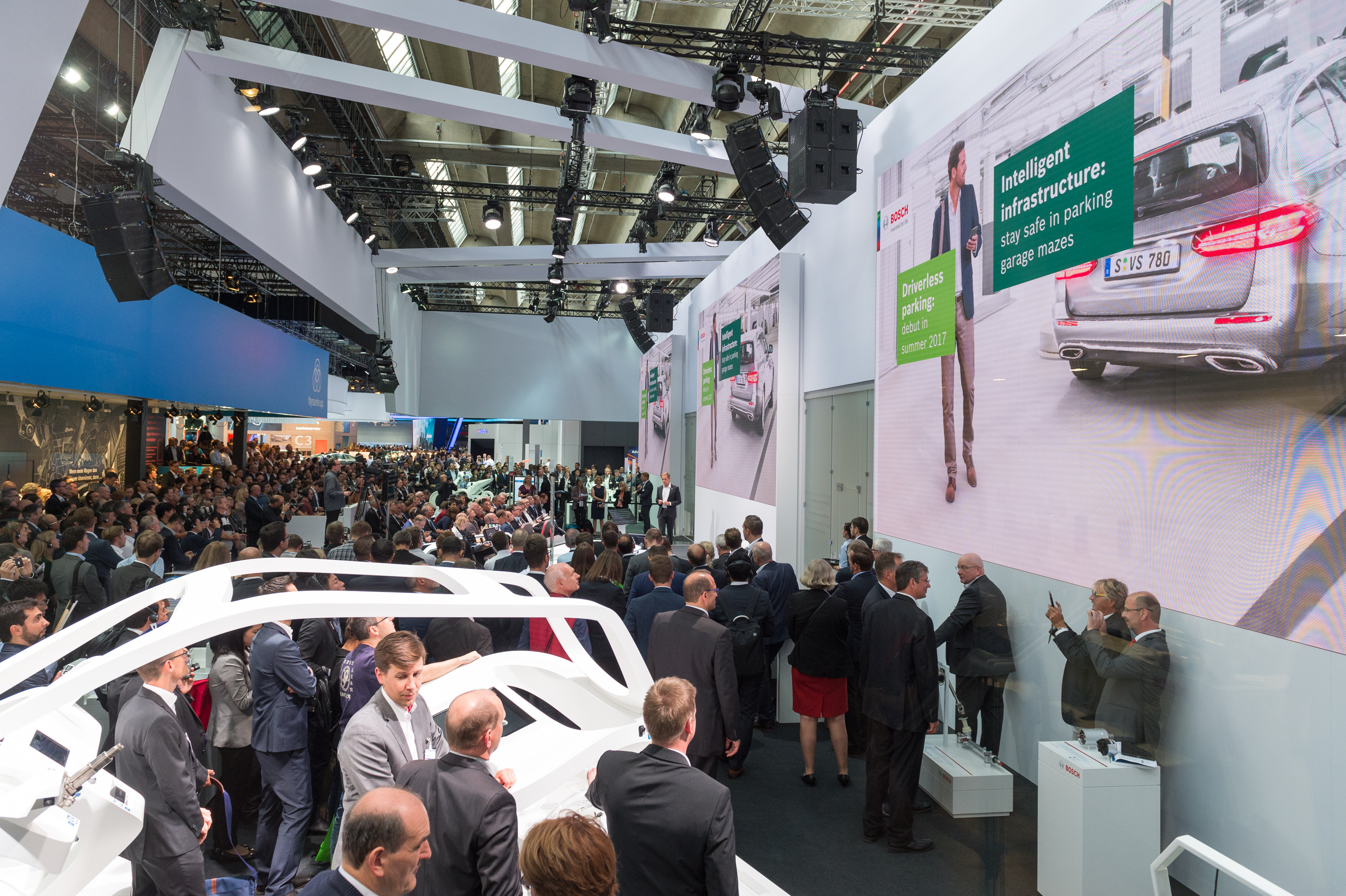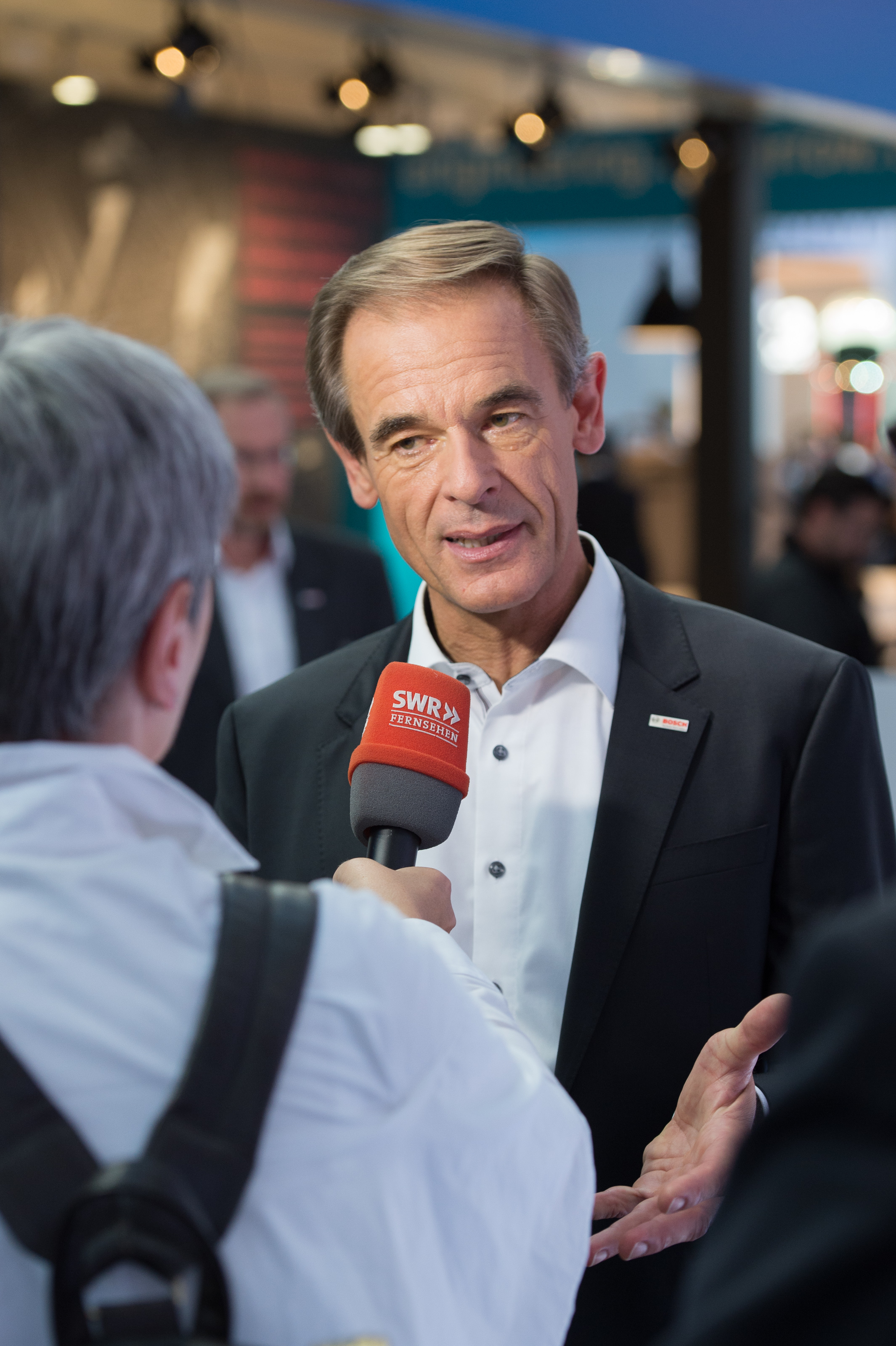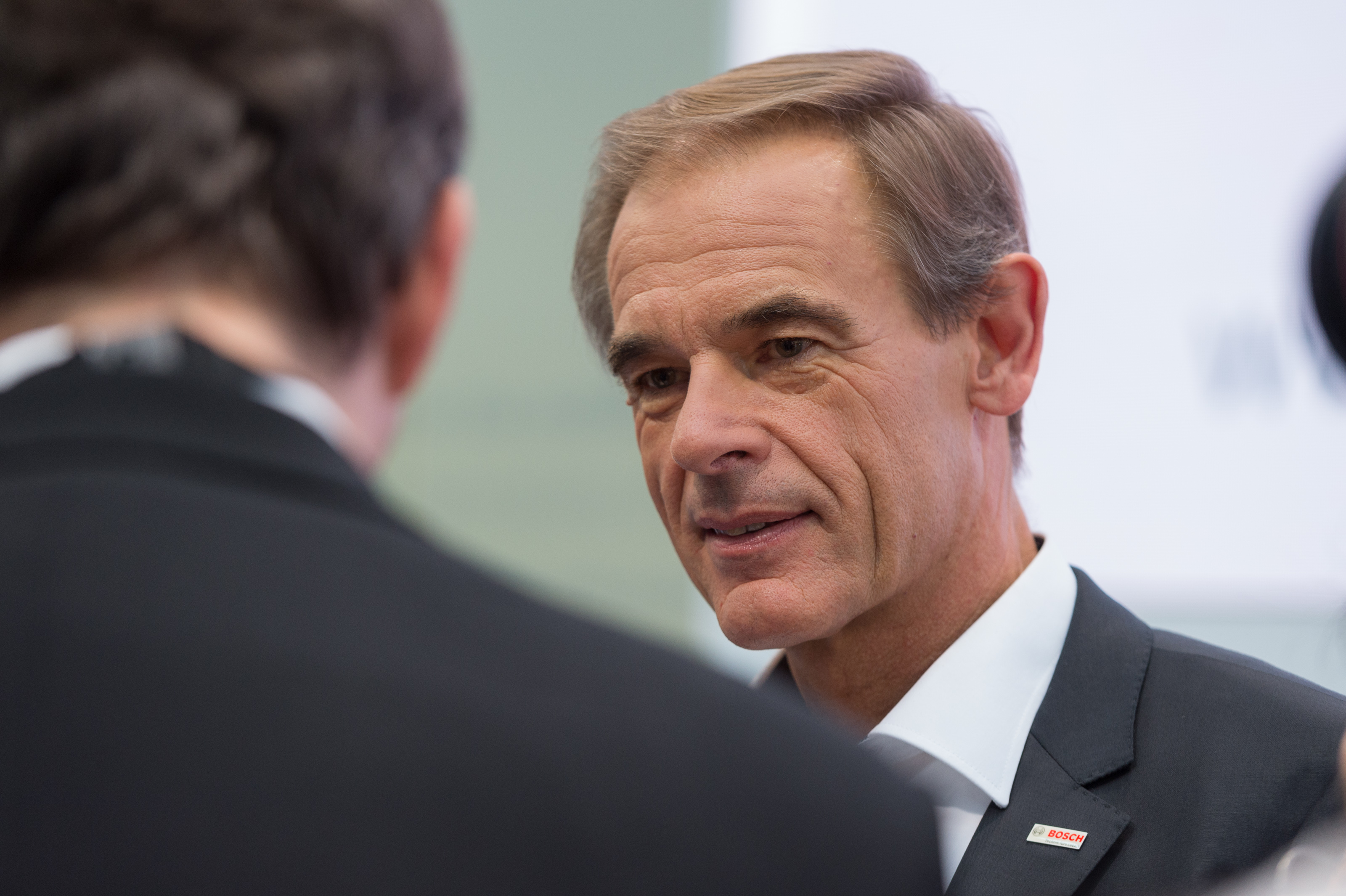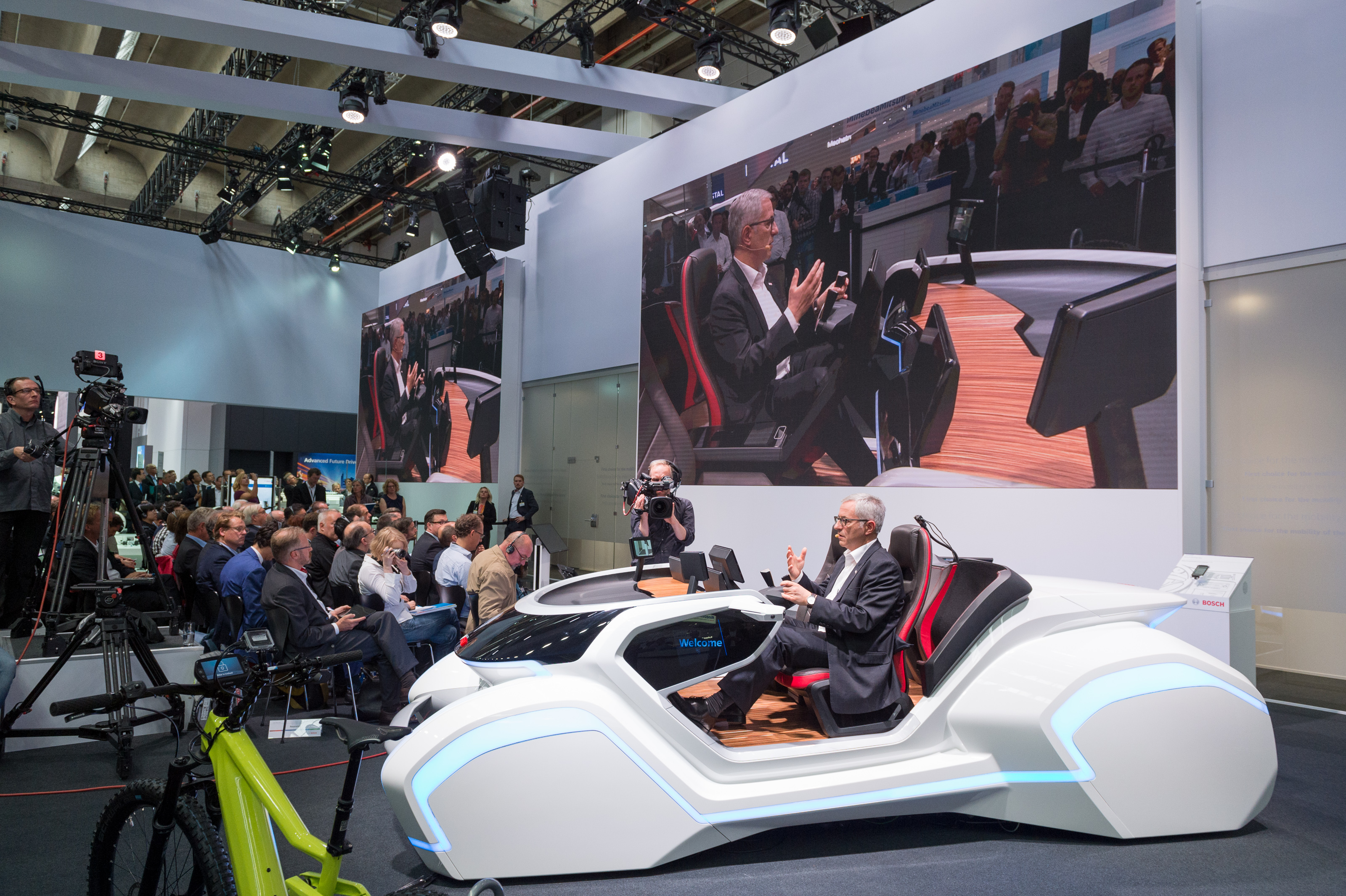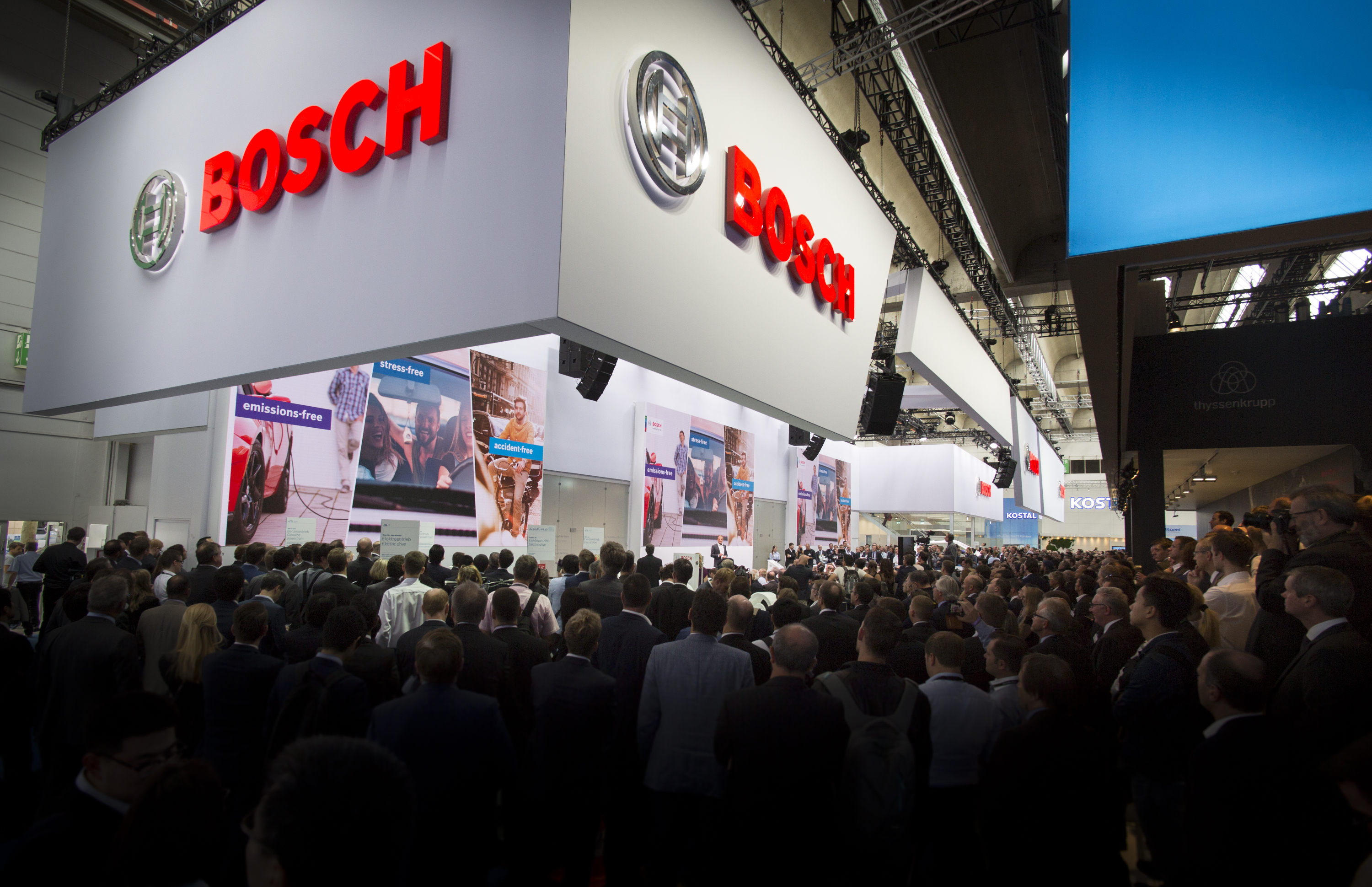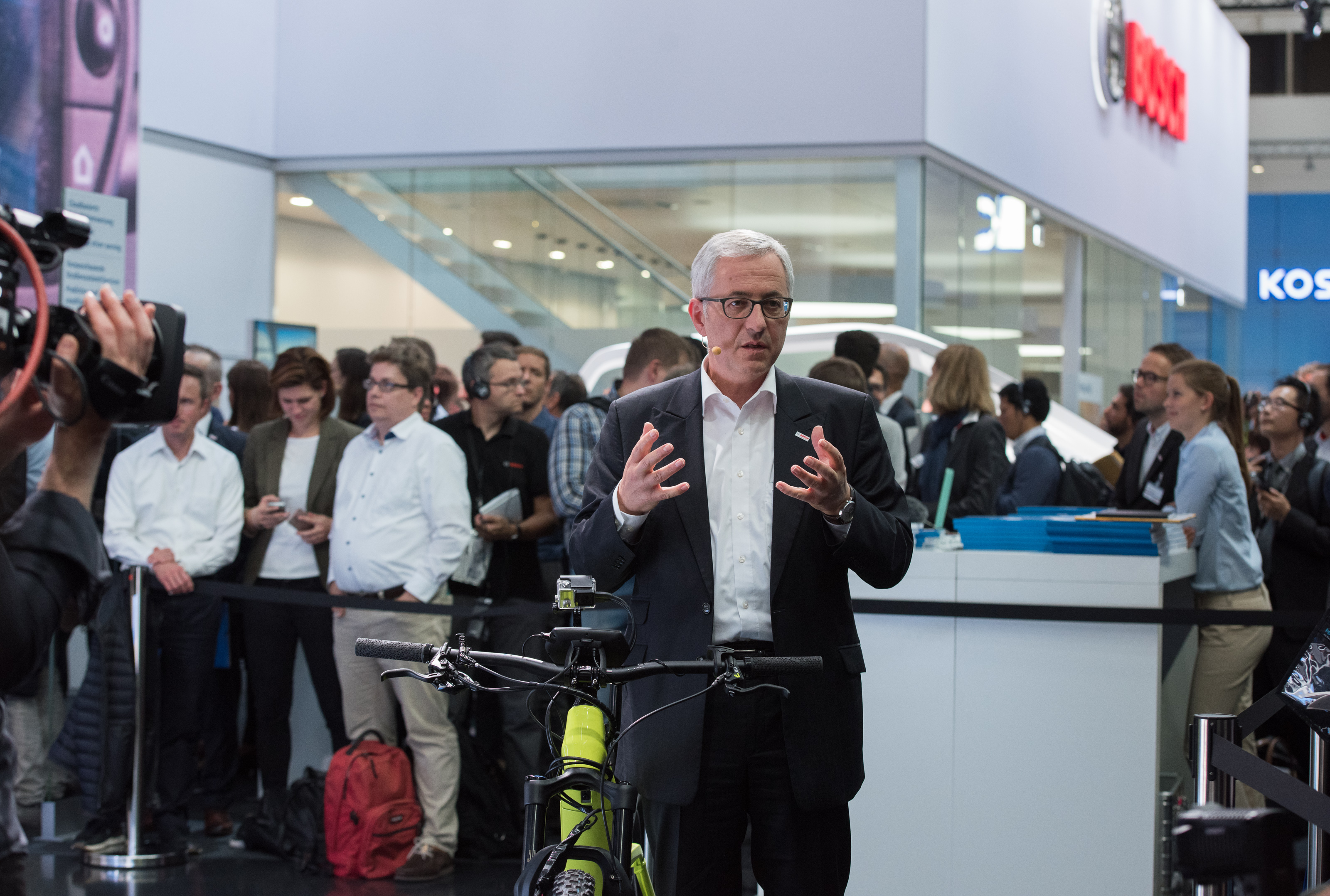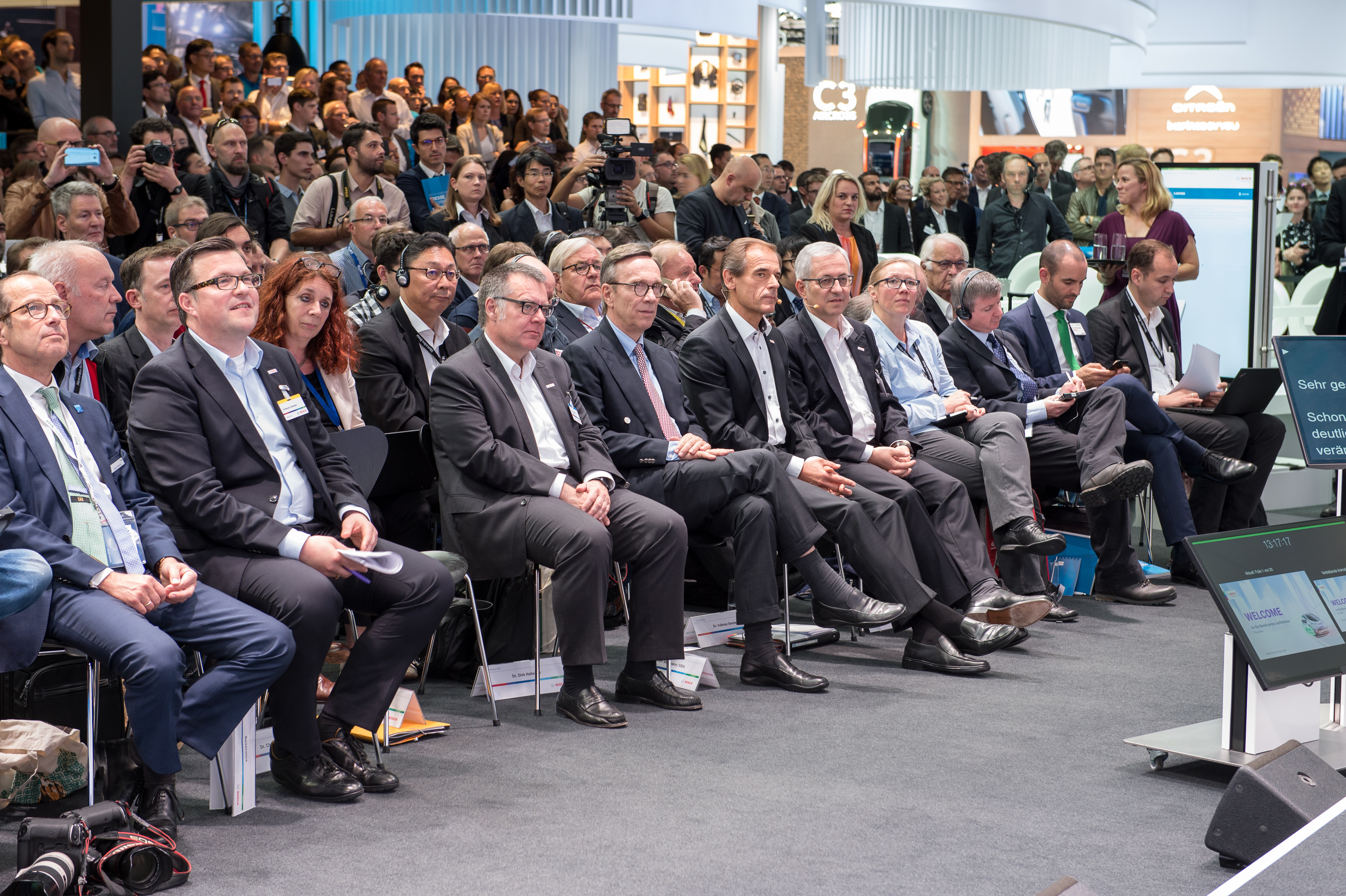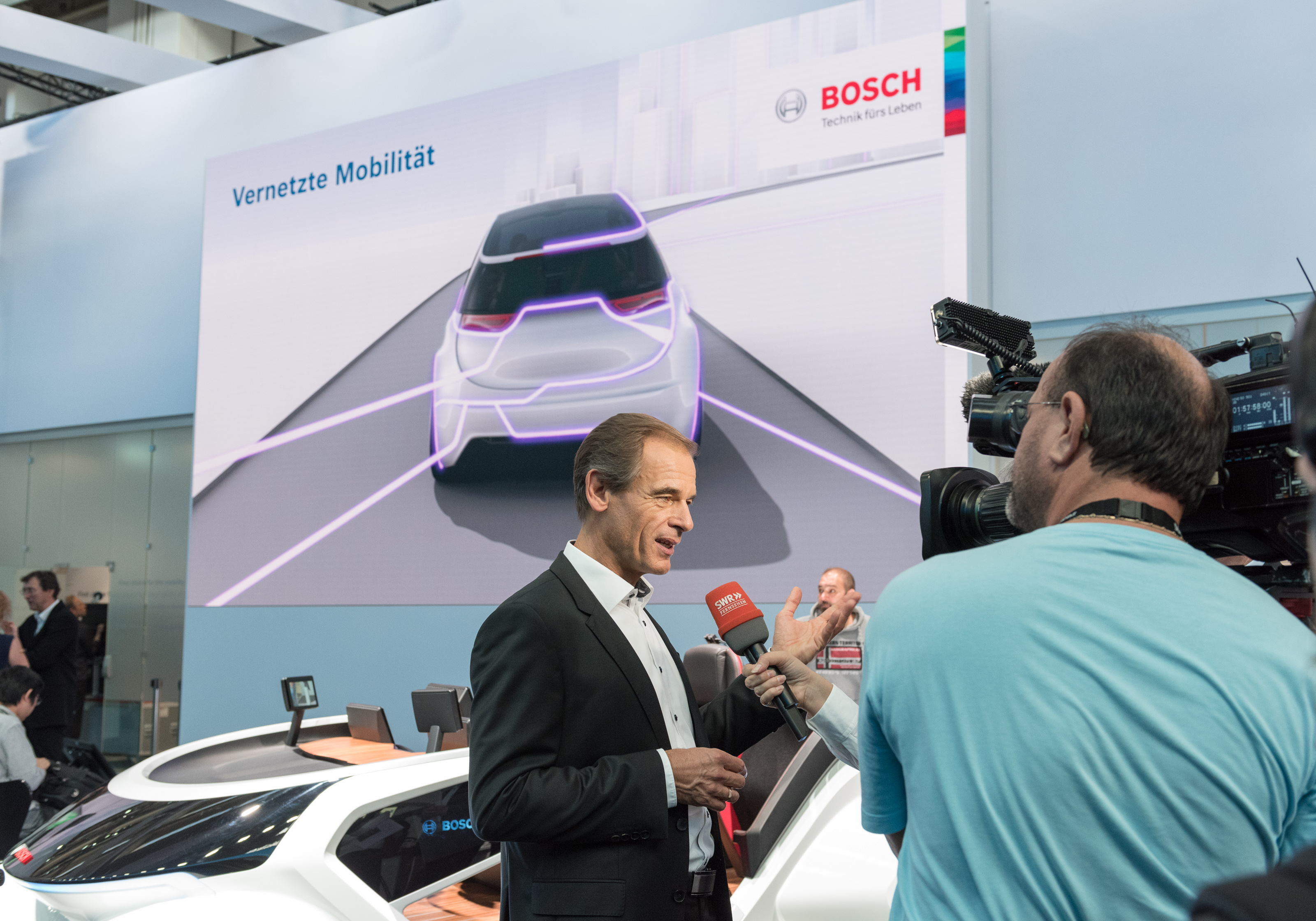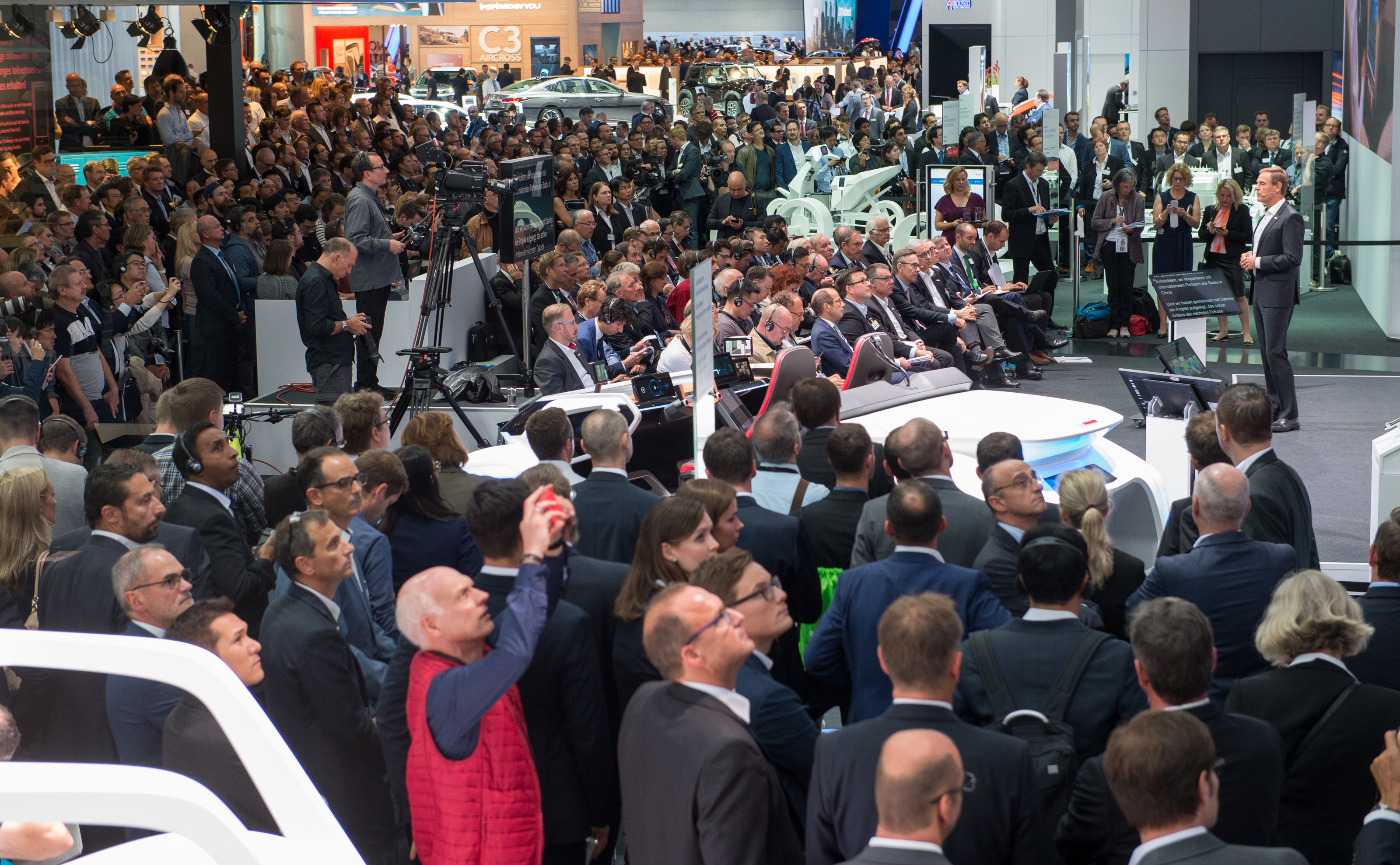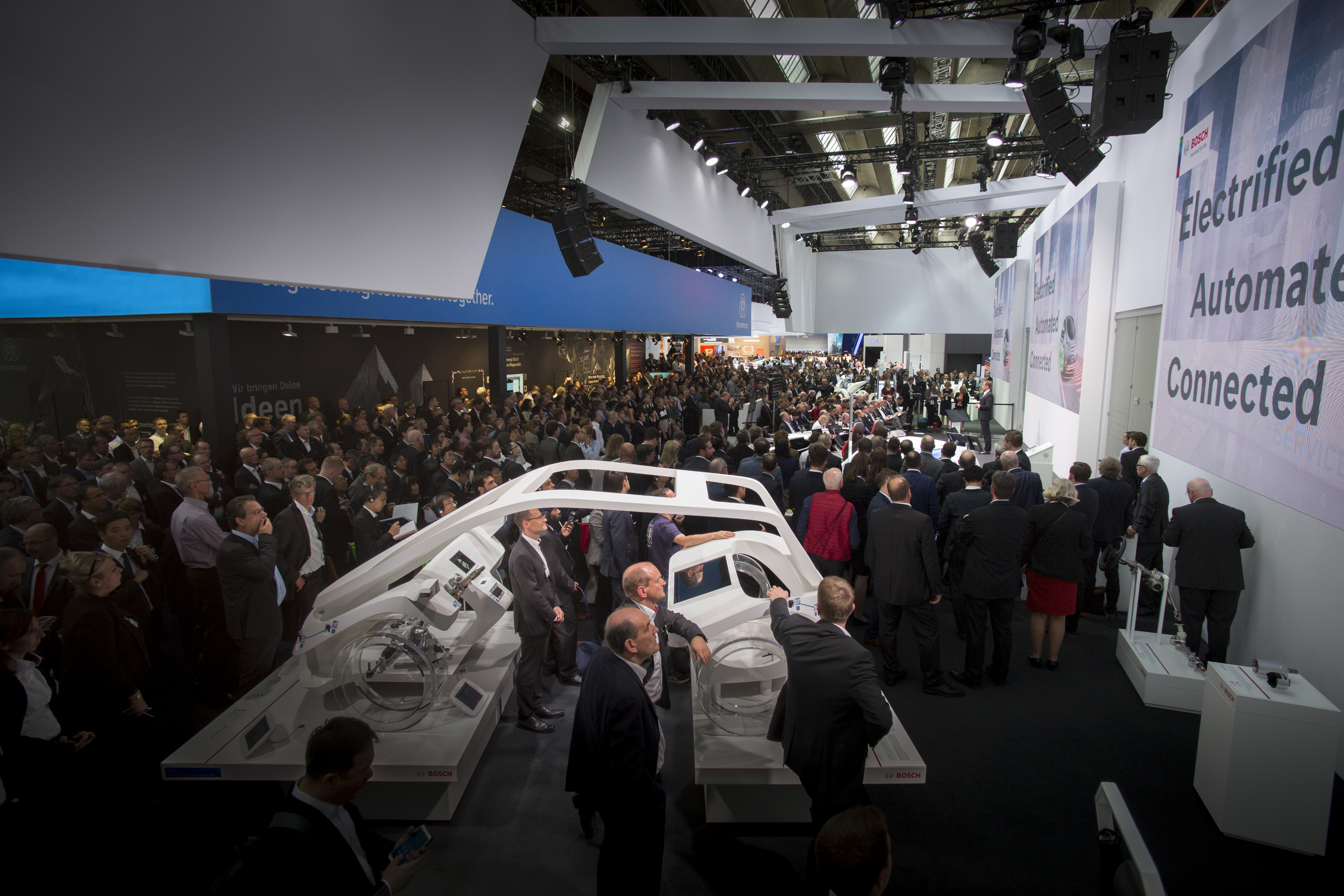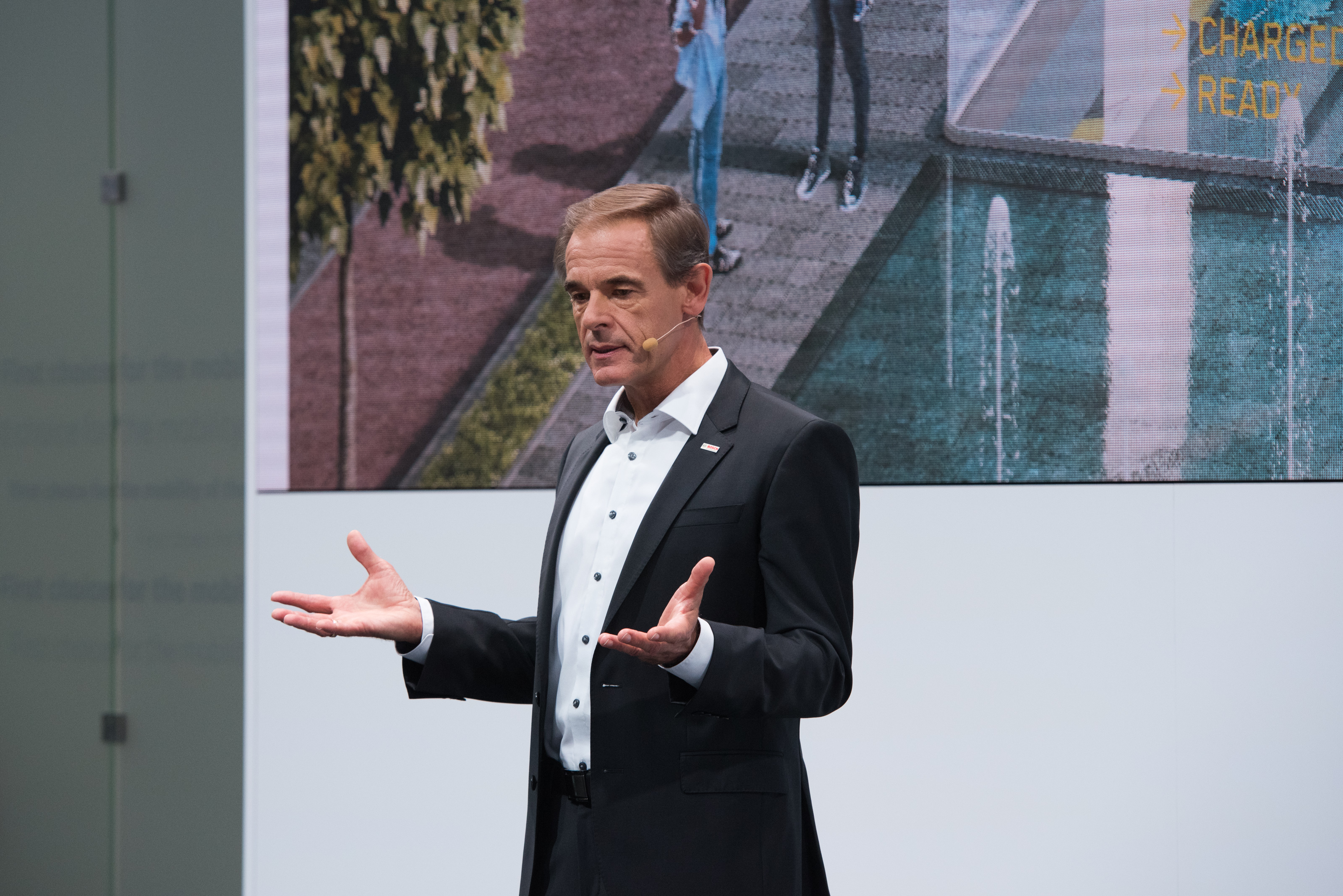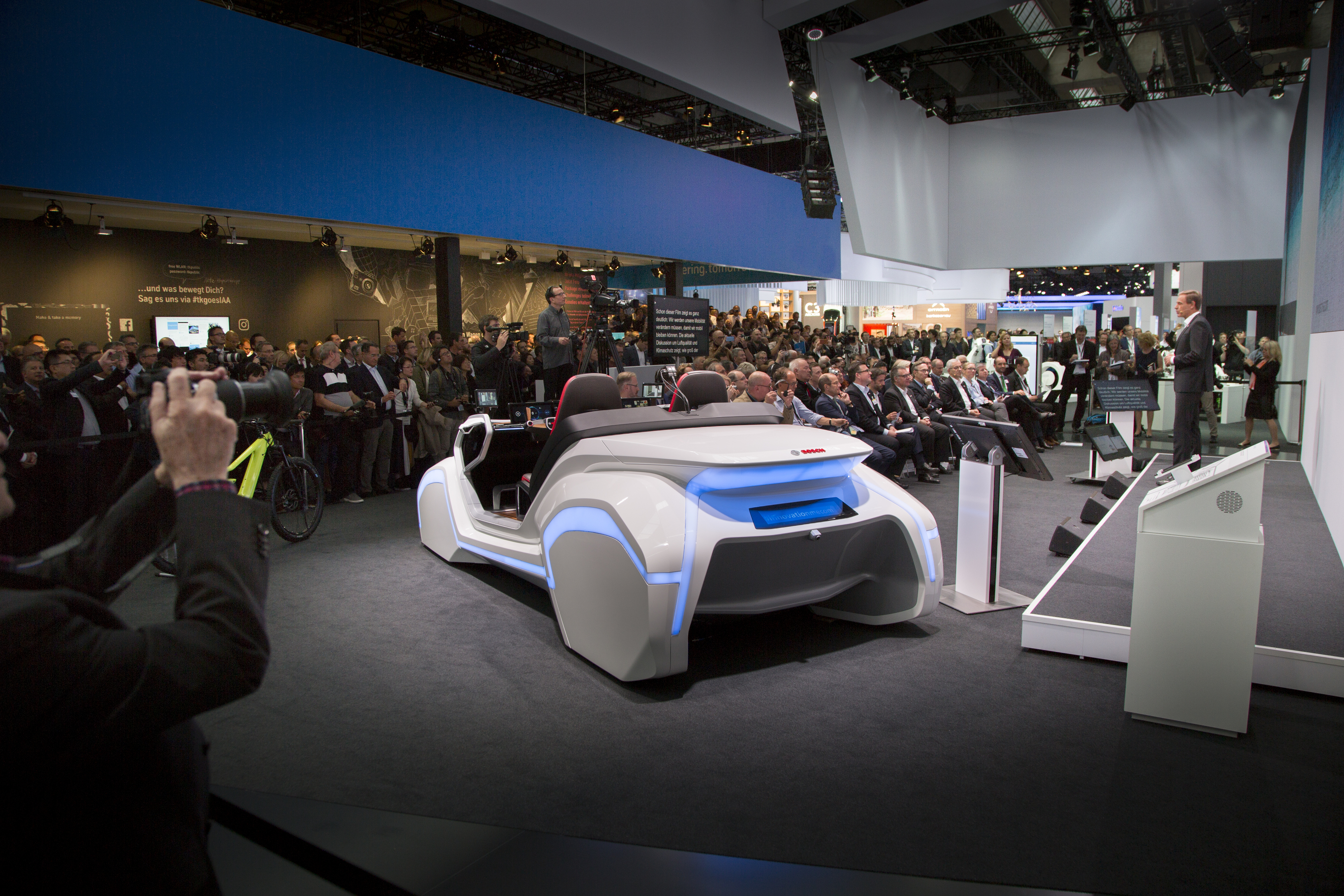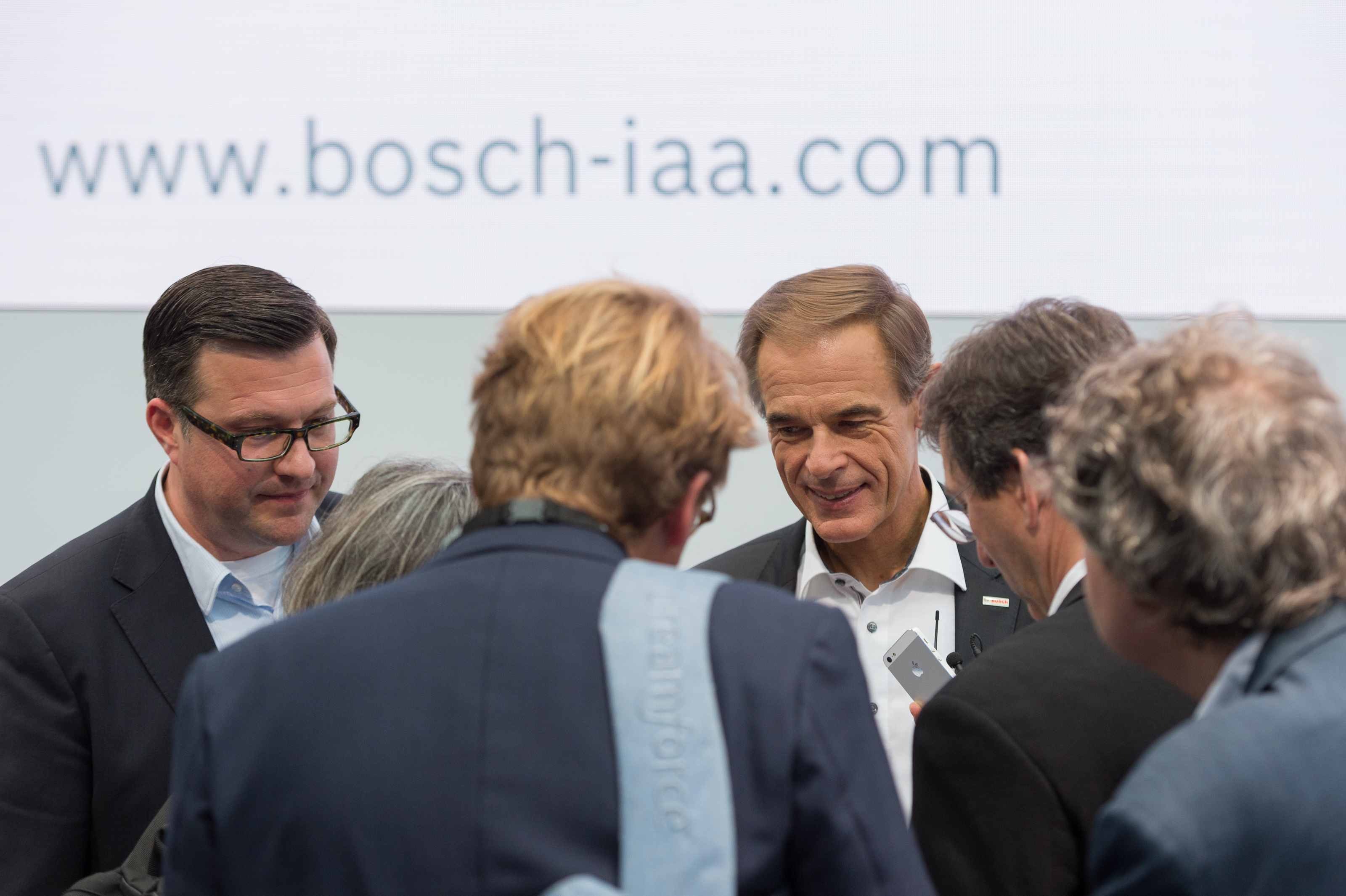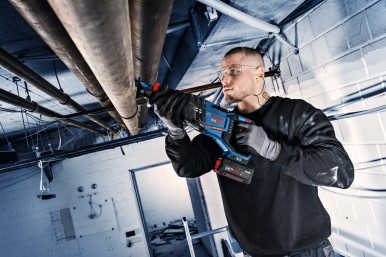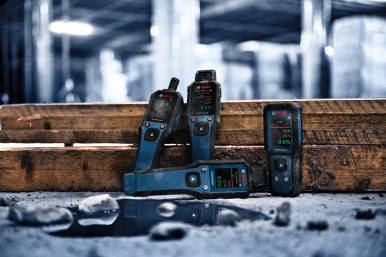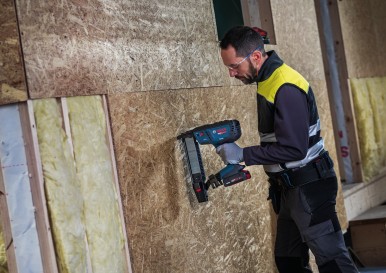Another way to protect the environment: coexistence of combustion engines and electric motors
So what are the urgent challenges of road traffic? Traffic jams, accidents, air pollution, climate action – we all know how many tasks we have to tackle. And yet all these problems seem to currently boil down to one thing: diesel. This is a matter that affects a company such as Bosch – not just because thousands of jobs depend on it at Bosch and elsewhere in the industry. What is especially worrying is the one-sidedness of the debate. We need a debate based on facts, a debate that takes account of aspects as diverse as climate action, clean air, and employment, as well as of the time that profound transformation takes. But concerns over the blind spots of this ongoing debate are mixed with the ambition of engineers. Our engineers aim to improve air quality in our cities, not just with diesel engines, but with all kinds of cars. Specifically, that means:
- We have more than 300 customer projects in which we are supporting automakers as they implement the strict Euro 6d emissions standard in real driving conditions. With diesel prototypes, we have demonstrated that we can already fall well within the limits stipulated for 2021. In other words, we can meet the legal requirements in real driving conditions, not just on the test bench.
- We are developing new solutions to reduce particulate matter, most of which comes not from exhaust, but from brake and tire wear. Our iDisc is going into production as early as next year. This carbide-coated brake disc generates up to 90 percent less brake dust.
In summary, there are many ways to combat climate change. Similarly, we see several options for the path toward alternative powertrains, from natural-gas engines to fuel cells. We are continuing to optimize the internal-combustion engine, and believe it will continue to exist side by side with electric cars for quite some time yet. How long that period of coexistence will last is still subject to debate. As far as that debate is concerned, I would like to give you an engineer’s perspective. First, we must remember that electromobility is truly eco-friendly only if the electricity is not generated from fossil fuels. At the same time, combustion engines can be CO2-neutral when powered by synthetic fuels that are produced using renewable energy. This process is still expensive, but the first pilot commercialization projects have been launched. Bosch has also been advocating this technology for many years. After all, synthetic fuels allow us to keep using existing gas stations and engines, and so have an impact on all vehicles on our roads. Ecologically, therefore, their effect is more immediate than if we completely overhaul our infrastructure and vehicle fleet. Strict and consistent use of these fuels could save some 2.8 metric gigatons of CO2 by 2050 – three times as much as Germany’s total CO2 emissions for 2016. We at Bosch are in favor of keeping our development options open, and not limiting ourselves to any one technology. I myself have set our engineers an ambitious goal: to achieve practically zero emissions in a combustion engine that breathes out what it breathes in, as it were. A combustion engine whose emissions – with the exception of CO2 – are virtually indistinguishable from the air it takes in. We want to achieve both this goal and electromobility, while keeping them affordable.
Economic clout: Bosch is growing faster than the market
In all this, we realize the short- and long-term solutions will involve not only a huge amount of technical effort, but will require considerable economic resources as well. A brief look at our ongoing operations shows that we have the necessary economic clout. Bosch Mobility Solutions will grow 7 percent this year, more than twice the rate of global automotive production. Our driver assistance systems are seeing particularly strong growth – stronger even than the current 25 percent growth in market volume. And we expect our sales in this market to surpass two billion euros as early as 2019 – twice their 2016 level. At the regional level, the current economic climate in China is especially favorable, not least for diesel commercial vehicles. Overall, our automotive business continues to see robust development – a crucial requirement for our upfront investments in the transformation of mobility. For example, we are in a position to invest about one billion euros in the construction of a new semiconductor factory in Dresden. This is the largest single investment in our company history and is aimed at producing, among other things, chips for automated and connected driving. By the end of 2017, we will have 48,000 research and development associates working on mobility solutions – some 4,000 more than at the beginning of the year. Regionally, most of these new jobs are in Asia, and mainly in software. We are strengthening our position for the mobility of the future.
Implementing the strategy: a new mindset and engineering approach
As I already said, our journey toward the future of mobility starts from solutions for the road traffic of today. Aside from climate change and air pollution, we see at least two further challenges:
- The first is that 1.2 million people around the world die in road accidents each year – that is more than 3,000 every day.
- The second is that in cities like Tokyo, cars travel at an average speed of just 15 kilometers per hour slower than a bicycle.
Given these considerations, we believe the issue is about more than building better cars – we also have to discover ways to avoid, shift, and improve traffic flows. Especially in major cities, where total traffic volume is expected to triple by 2050, we have to think of mobility in more flexible terms than in the past. And by “flexible,” I mean multimodal concepts with seamless transitions from cars to trains, trams, or bikes. This is another reason our three development approaches complement one another – we want to make transportation not only electric and automated, but connected as well. Only if all three aspects are present will transportation be as emissions-free, accident-free, and stress-free as possible.
The closer we look, the more clearly connectivity emerges as the key to the mobility of tomorrow. It not only enables brand-new models of shared mobility, but it revolutionizes individual mobility as well. For example, in the future, there will be two kinds of cars:
- One is a driverless shuttle – a simple, robust transport pod that passengers will be able to book online, quickly and easily.
- The other is a vehicle that acts as a personal assistant, connected over the internet to the smart home and the office. This will add value to the driving experience – time in the car will no longer need to be wasted time.
But what role will Bosch play in this transformation of mobility? The answer is again twofold:
- For one thing, we will more than ever be a supplier of automotive high-tech. For example, the “intelligence” in the car of the future will be accumulated in a few master computers – and by 2020, these computers will be a good 200 times more powerful than today’s ECUs. Bosch is putting the power of the IT world on the road. In other words, we are combining powerful performance with reliability.
- For another thing, we will increasingly become a provider of mobile services. These may be shared mobility services, such as our Coup e-scooter sharing service, which we have successfully launched in Berlin and Paris. But mobile services can also mean access from the car to the smart home – another area where Bosch technology excels. And finally, we deliver entire technology and service packages for smart cities. Around the world, Bosch is currently pursuing 14 beacon projects relating to smart cities, half of them focusing on urban mobility.
All in all, one thing is clear: not only was Bosch the first company to stake out the key development approaches to the mobility of the future – electrification, automation, and connectivity – but it is also throwing its economic and technological might into these approaches. But even more importantly, in my view, we are already translating our progress into solutions ready for the market or for mass production. Let me give you a prominent example from each of our areas of focus.
Fewer accidents: automated driving starts with parking
The first of these is automated driving. This is arriving faster than expected, also in cities. We have put 3,000 engineers to work in this area. We are cooperating with international partners like Baidu in China, and we have launched a project with Daimler intended to make driverless car-sharing fleets a possibility in urban areas in the early years of the next decade. Above all, our automation efforts are succeeding particularly quickly in parking – an area where the driving itself is fairly manageable, but especially time-consuming and nerve-wracking.
It’s something we’re all familiar with: the long search for available parking spaces, which makes up nearly one-third of the traffic in our cities. Not only that: maneuvering into parking spaces and in parking garages causes one-fifth of all fender benders. We offer solutions that can help. This summer, we joined with Mercedes-Benz to debut the first live demonstration of automated valet parking – a method of driverless parking in parking garages in which the vehicles themselves find a parking space. We arrived at the solution by taking a pragmatic approach: not only did we integrate the necessary sensors into the car, but we also distributed them throughout the parking-garage maze. This is not only a solution that reduces stress for drivers. It also frees up space for garage operators, since driverless parking makes it possible to park cars closer together, boosting space utilization by up to 20 percent. Even in this initial guise, therefore, automated driving offers multiple benefits.
Less stress: connected driving means fewer visits to the repair shop
Our “connectivity” approach is also bearing its first fruit. Here as well, we are relying on open partnerships. But like no other company in the automotive industry, we are contributing expertise in the “3 S’s” that are key to the internet of things: sensors, software, and services. Even now, 1.5 million vehicles are connected using Bosch IoT software. That’s because we have partnered with a German automaker to offer software updates over the air – a service that will become standard for future vehicle generations.
It’s something we all know from our smartphones: in a straightforward process, software is updated time and time again over the device’s lifetime. Similarly, a car’s software can be updated. So far, however, this has involved considerable effort on the part of the driver: visits to the repair shop, stress, and lost time. This is precisely what our new over-the-air software service seeks to remedy. The service has to satisfy one crucial criterion: the data must be transmitted to the car securely and reliably. To achieve this, the 150 specialists at our Escrypt subsidiary offer customized cyber-security solutions. We believe that over-the-air software will add a new diversity to driving, making it possible to customize cars to a greater degree than was ever thought possible. In the future, for instance, drivers will be able to download additional driver assistance functions for a virtually stress-free drive to their vacation destination. It is no longer only the automakers, but the drivers themselves who will be able to repeatedly reconfigure their own vehicles. This serves as an excellent example of what connected driving offers: less stress, more possibilities.
Lower emissions: electric driving starts off small and light
Lastly, I wish to say a few words about how we are turning electrification of the powertrain into a market success. Bosch electrical powertrain components already feature in over half a million vehicles around the world. We supply the powertrain system for the German Post Office’s Streetscooters, the largest electric vehicle fleet in Europe. And we are doing well in China, the world’s largest market for electromobility: In 2016 alone, we won 16 major orders there, five of them for the 48-volt battery technology that makes entry-level hybrid powertrains possible.
We believe that 48-volt technology holds the key to the new trend of light electromobility: all-electric, very small, and very light vehicles. We already have the electric makeover of the legendary Schwalbe moped, and we will soon be seeing electric rickshaws in India. Urban vehicles like these don’t have to set records for range – they are short-distance specialists. Bosch has developed an entire technology package for this kind of light electromobility. At its core is the 48-volt powertrain system, which consists of battery, electric motor, and ECU.
Add to that a display and an app, and of course a battery charger for recharging at power sockets. In developing this package, it was especially important that all components should be production-tested, as well as scalable for two-, three-, or four-wheelers, depending on the desired level of power. It is precisely this straightforward approach that is the secret of our modular system: it allows new mobility providers to quickly bring a vehicle to market, with no more than 12 to 18 months between start of development and market launch. This speed is unprecedented in the automotive industry. The result is lower costs – for our customers, but also for anybody who opts for electric transportation. It is yet another reason we are convinced that light electromobility will play a major role, not only in Asia, but also in Europe. We expect to see some 100 million light electric vehicles roll off the production lines worldwide by the year 2020. Sales generated by our 48-volt system have been modest thus far, but they will at least double each year as we head into the next decade. Light electromobility is a response to the pragmatism shown by city dwellers when it comes to mobility: they want to get to their destination in a simple way, if possible without emissions and stress, and in a vehicle that fits into any parking space.
As you can see, ladies and gentlemen, we are working on creating accident-free, stress-free, and emissions-free mobility. But we’re not waiting for the future to happen – we are delivering it today. Naturally, we are also doing everything in our power to make electromobility affordable in larger vehicles as well. And since people don’t always need to own their own vehicle, we are making it easier to switch to shared mobility. To address these topics in further depth, I will now turn the floor over to my colleague Mr. Bulander, who will present two exhibits here at our booth …
